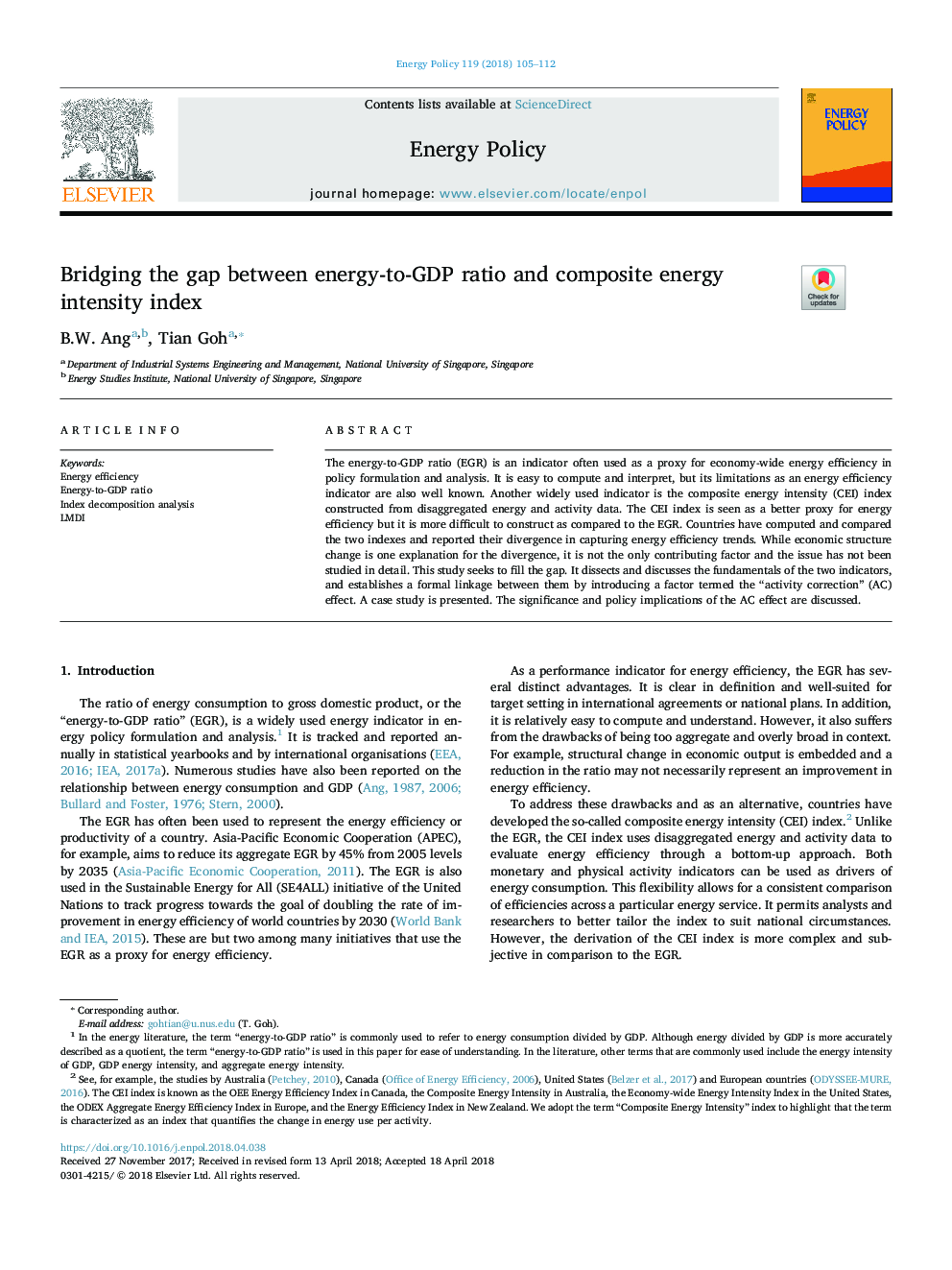| کد مقاله | کد نشریه | سال انتشار | مقاله انگلیسی | نسخه تمام متن |
|---|---|---|---|---|
| 7396812 | 1481239 | 2018 | 8 صفحه PDF | دانلود رایگان |
عنوان انگلیسی مقاله ISI
Bridging the gap between energy-to-GDP ratio and composite energy intensity index
ترجمه فارسی عنوان
شکاف بین نسبت انرژی به تولید ناخالص داخلی و شاخص شدت انرژی کامپوزیت را برآورد کنید
دانلود مقاله + سفارش ترجمه
دانلود مقاله ISI انگلیسی
رایگان برای ایرانیان
کلمات کلیدی
موضوعات مرتبط
مهندسی و علوم پایه
مهندسی انرژی
مهندسی انرژی و فناوری های برق
چکیده انگلیسی
The energy-to-GDP ratio (EGR) is an indicator often used as a proxy for economy-wide energy efficiency in policy formulation and analysis. It is easy to compute and interpret, but its limitations as an energy efficiency indicator are also well known. Another widely used indicator is the composite energy intensity (CEI) index constructed from disaggregated energy and activity data. The CEI index is seen as a better proxy for energy efficiency but it is more difficult to construct as compared to the EGR. Countries have computed and compared the two indexes and reported their divergence in capturing energy efficiency trends. While economic structure change is one explanation for the divergence, it is not the only contributing factor and the issue has not been studied in detail. This study seeks to fill the gap. It dissects and discusses the fundamentals of the two indicators, and establishes a formal linkage between them by introducing a factor termed the “activity correction” (AC) effect. A case study is presented. The significance and policy implications of the AC effect are discussed.
ناشر
Database: Elsevier - ScienceDirect (ساینس دایرکت)
Journal: Energy Policy - Volume 119, August 2018, Pages 105-112
Journal: Energy Policy - Volume 119, August 2018, Pages 105-112
نویسندگان
B.W. Ang, Tian Goh,
